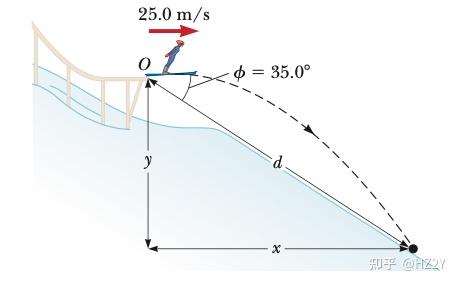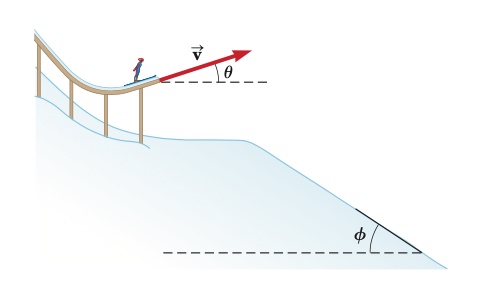The physics behind ski jumping
时间: 2021-04-12 12:47:50 | 作者:HZ2Y | 来源: 喜蛋文章网 | 编辑: admin | 阅读: 104次
- 2023-08-07 01:01:37高中物理老师总说“化雪天比下雪天冷”,那为什么相比于化雪天更暖和的下雪天雪不会融化呢
- 2023-06-16 22:01:37高中物理社可以安排怎样的狠活或花活
- 2023-03-13 09:04:56物理科普的渠道有哪些
- 2023-01-21 22:01:40高中物理有哪些经典的实验
- 2023-01-02 12:04:32理论物理科普有什么意义
- 2022-12-06 17:59:55高中物理电磁学有哪些考点
- 2022-10-26 21:00:18高二 有哪些关于物理科普类的书啊
- 2022-01-02 03:00:56有哪些好的适合高中和大学的物理科普书籍
- 2021-08-19 20:40:48我出书了! 《什么是高中物理》
- 2021-07-06 13:26:48高中物理笔记:易忘知识从必修2开始!

As we all know, ski jumping is one of the most popular winter sport all over the world. Have you ever try to find out the physics principle behind the sport and try to explain the motion in mathematical way.
Here is a ski jumping model question which is from Canadian Association of Physicists (CAP) 2021 question paper. It is a kind of ski jumping because the path of the ball is similar to the counterparts.


So let’s start with analysis this question. We usually solve this type of question by decompose the velocity into X-axis and Y-axis:
Then we can get a formula t in terms of x:
The next step is substitute t into y, we can obtain an expressive of y in terms of x:
We can simplify this expression into:
Since:
So:
Then we can use double angle formula to simplify it further:
So we get x in terms of . The next stages involve differentiation question, if you don’t know how to deal with it, you can just skip this stage. It may make you confuse about the following phases. So I will show you the basic differentiation formula we need in this question:
In order to find the maximum of x in terms of , so we have to find out the first derivative of the function and let it equal to zero:
Then we use double angle formula again to simplify the expression:
Let the first derivative equal to zero, since 2 square V over g is constant, so just let the part in the brackets equal to zero:
Use trigonometric function transformation:
We get:
We know that is a constant:
We can mention that:
At the end:
The answer is:
Then we will focus on another problem (real ski jumping question)


By first, we find out the coordinates of the jumper as a function of :
(3)
Then we substitute (3) into (2):
The final step is substitute the data into the equation, I won't show you the step but the final answer:
final answer
Then let us move on a further question:
A skier leaves the ramp of a ski jump with a velocity of v = 10.0 m/s at

substitute t into :
We can mention that it is a quadratic function, also we can express the slope into a linear equation:
So we let then equal:
We can draw the path in this way:
(I plus 40 on each but it won't change anything just make it look nice in the first quadrant)


At the end, you will find it not hard to solve the equation, so I will not show you the question. Here is a video which is talking about the same thing in other way, if you're not clear please watch this video.
https://www.youtube.com/watch?v=xOpCP0ZPmWM&t=24swww.youtube.comhttps://www.youtube.com/watch?v=QT8dYTNeZmM&t=97swww.youtube.comIn the last, if you have any problem of the article you can ask me anything via private mail.
If you think that it is helpful for me, subscribe me and I will upload more things about physics, thanks!
[The physics behind ski jumping] 相关文章推荐:
- 最新经典文章
- 热门经典文章
- 热门文章标签
全站搜索